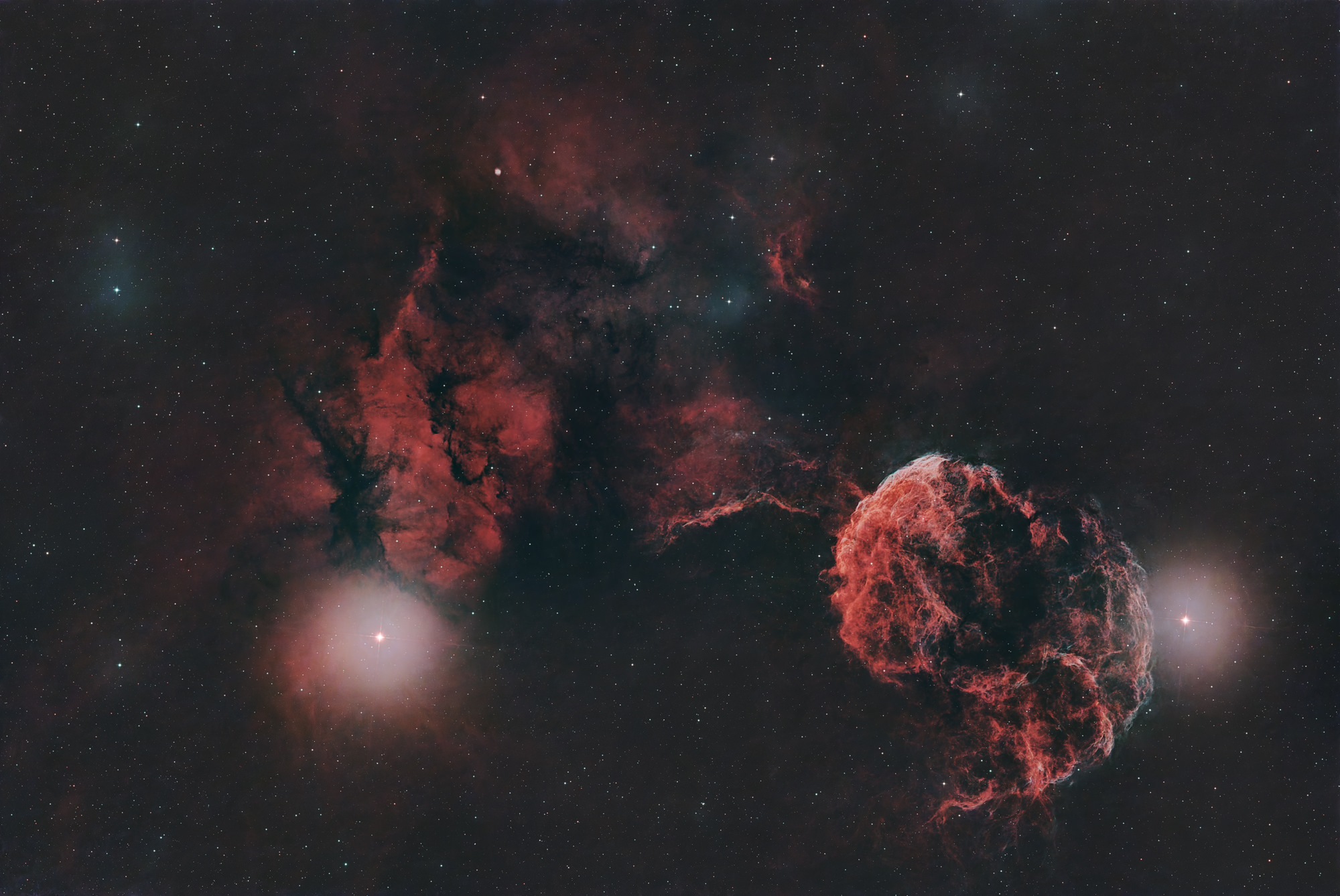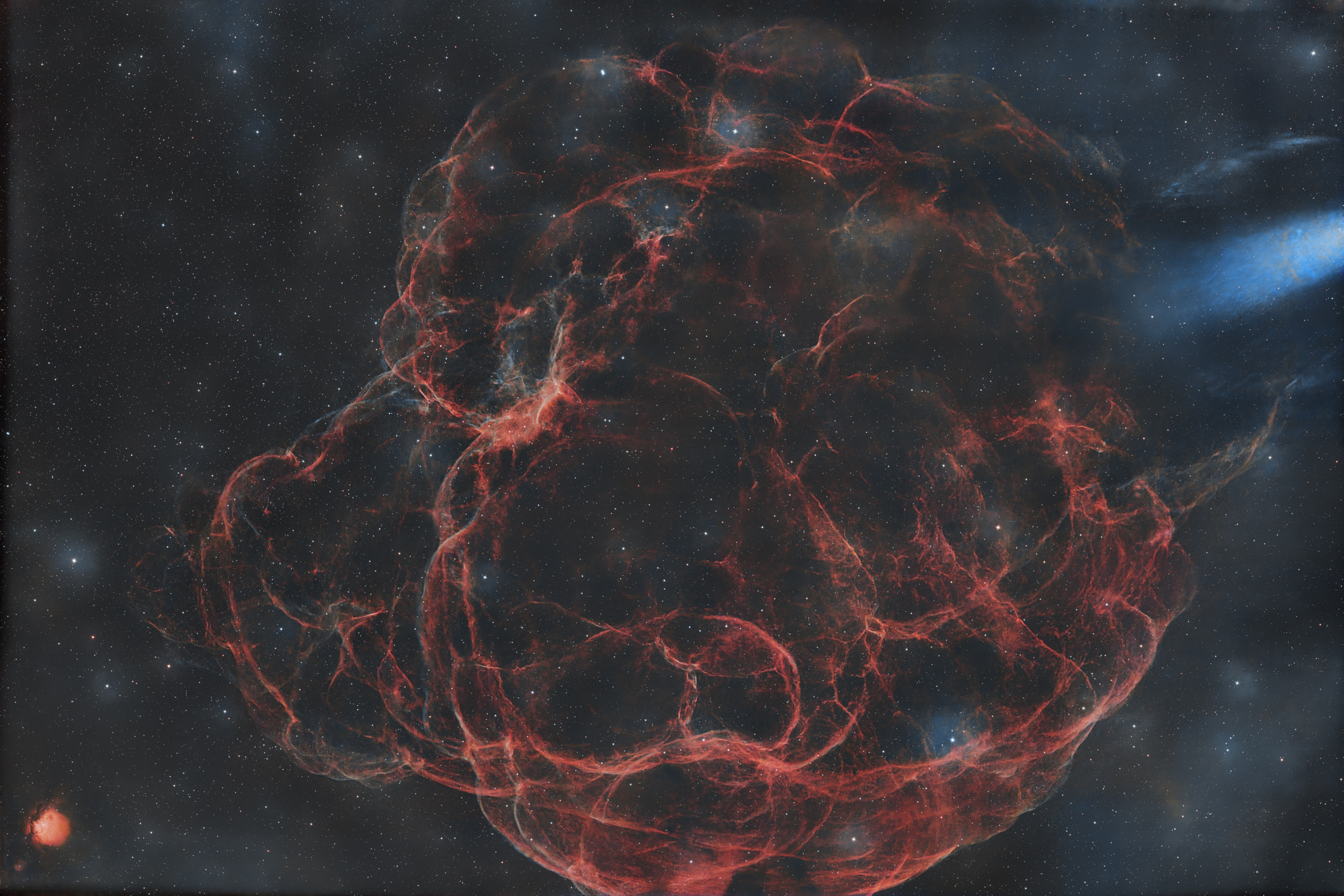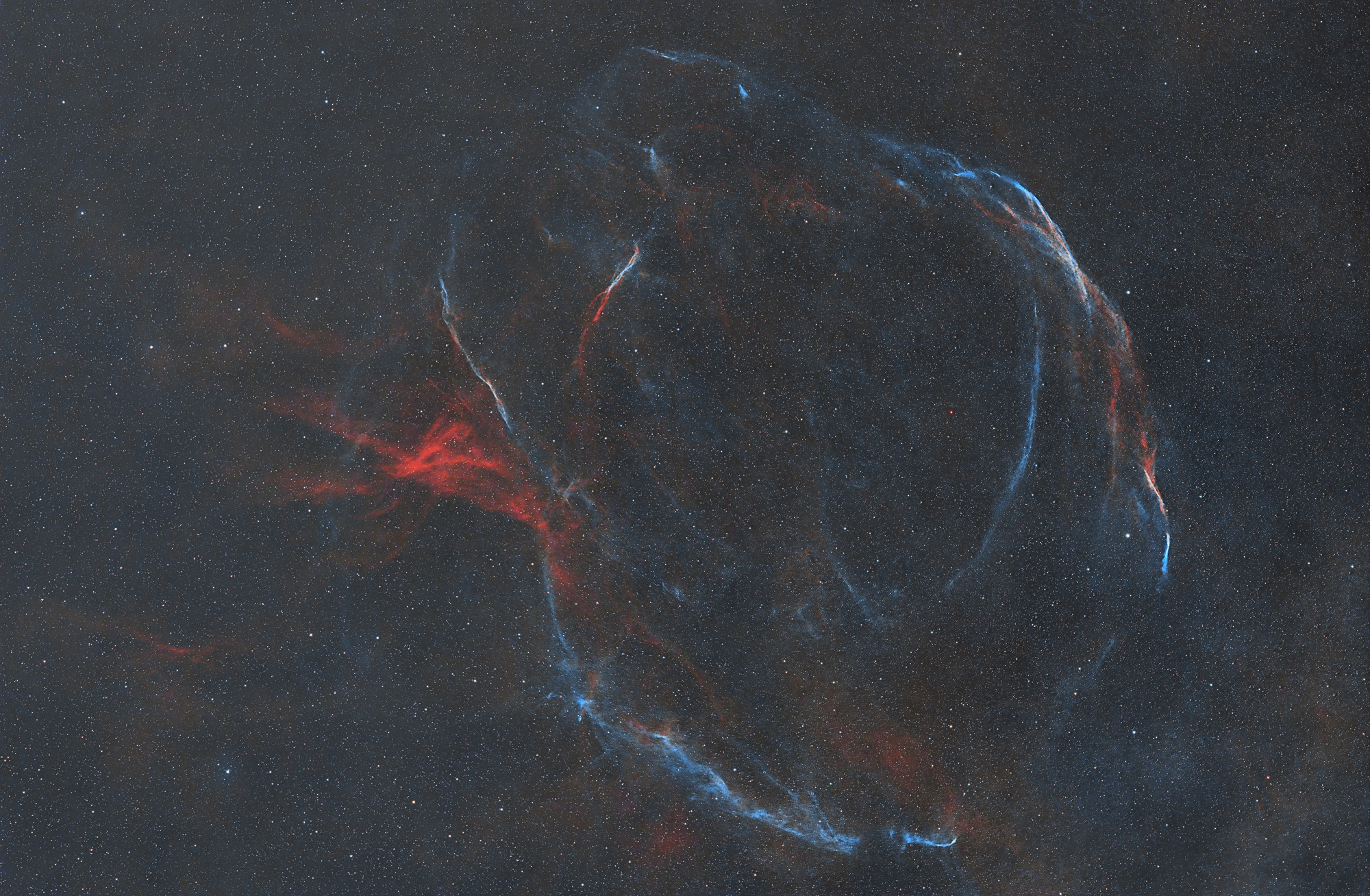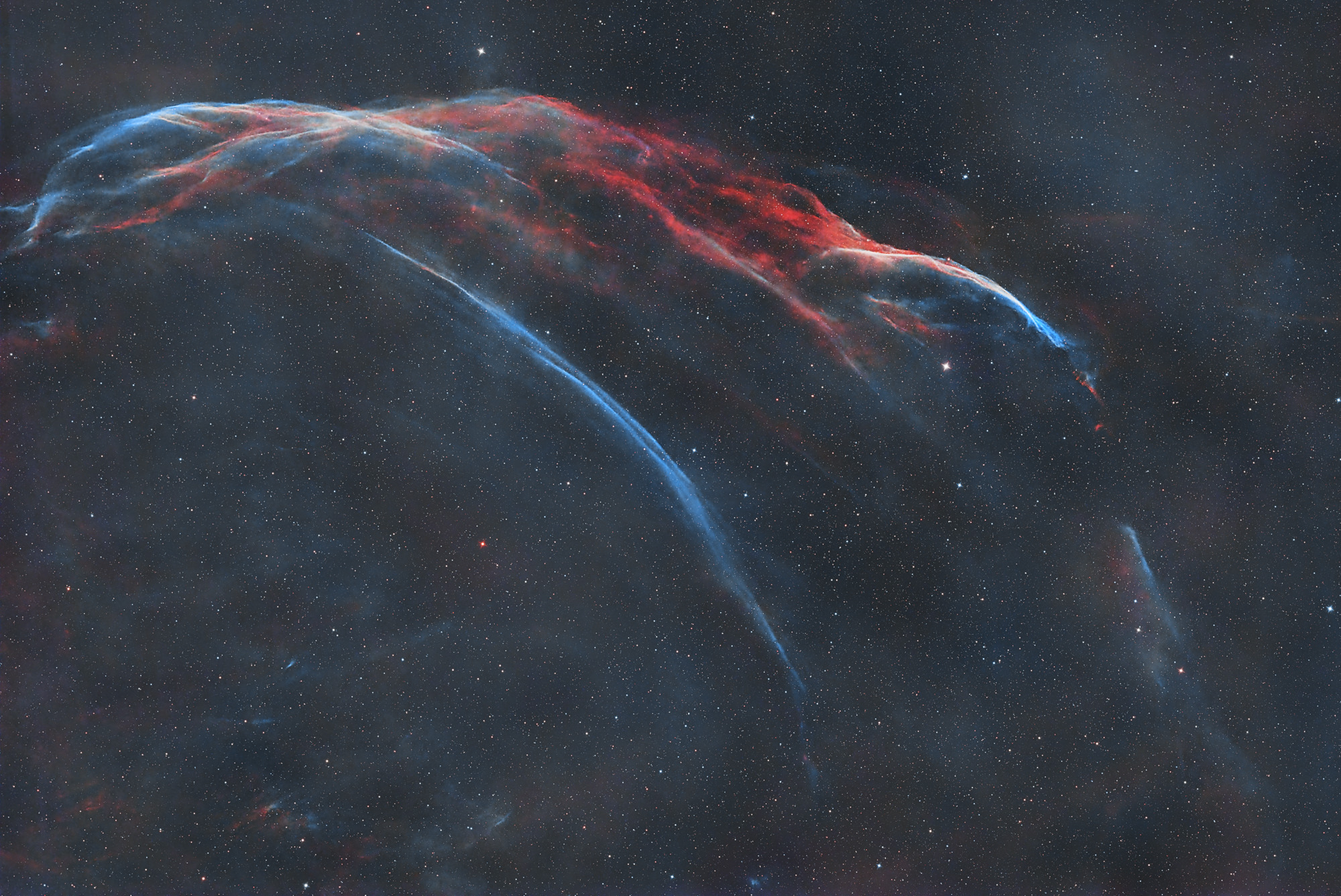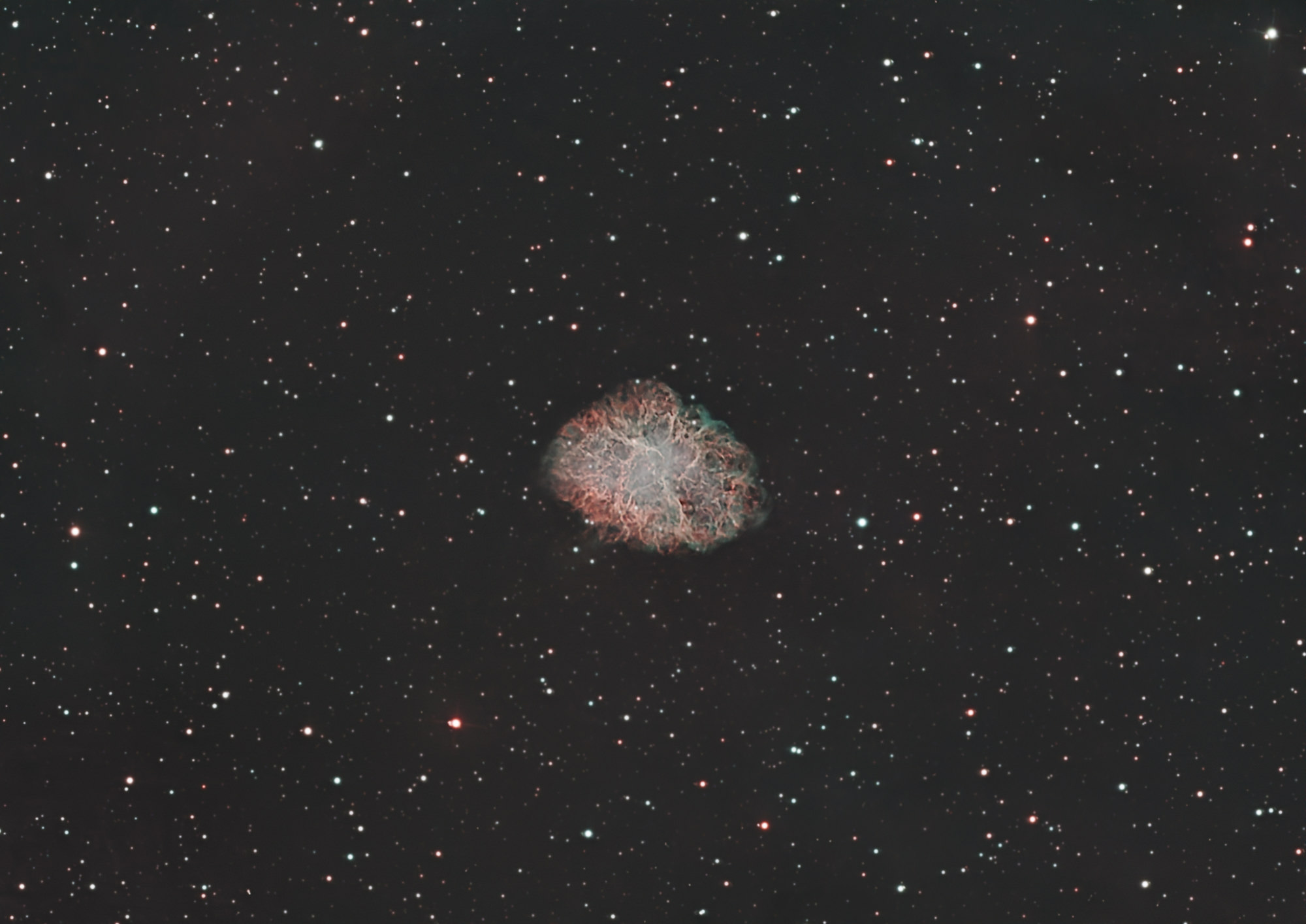Other astronomical objects
Stars are born when clouds of gas and dust contract under their own gravity. Once enough mass has accumulated, the pressure and temperature increase so much that nuclear fusion reactions start. Hydrogen usually fuses into helium over several intermediate steps. The temperature required for this is around 10 million Kelvin.
As long as the nuclear fusion pressure from inside and the gravity from outside are in balance, a star is stable.
If the fuel supply inside a star runs out, gravity from outside gradually takes over and the star begins to die.
This means that the Size of a star determines the attainable age and the way a star dies.
Protostars
Protostars
(literally translated precursor of a star, from the Greek protos = the first) are young stars that are currently in the process of being formed. They are also called brown dwarfs and are not yet hot enough for nuclear fusion. Further gravitational mass increase would be required. In this case, they would continue to contract until the temperature inside them exceeds 3 million Kelvin and hydrogen burning begins. A young (light) star would be born.
If there is no further increase in mass, energy production stops and the star cools down.
Light stars
Light stars with 0.8 to 8 times the mass of our sun, lasting several billion years. During this time, the star produces energy by converting hydrogen into helium.
When the hydrogen supply is used up, the star inflates and turns into a Red Giant, examples include the stars Aldebaran or Betelgeuse.
Red Giants expand, become significantly cooler and their color becomes yellowish to red.
A few million years later, the outer shell disperses into space into a Planetary Nebula.
What remains is a core that has been compressed by gravity to about the size of the Earth - a Withe Dwarf.
Medium weight stars
Medium weight stars have 8 to 20 times the mass of the Sun. Their evolution is much faster than that of light stars - their stable phase lasts barely a billion years before they run out of nuclear fuel. Then they transform into supergiants of enormous luminosity. The demise of these giants is triggered by a destructive "supernova explosion" that blows away the star's outer shell. What remains is an unimaginably dense core – a “Neutron Star”
Heaviest stars
The heaviest stars are more than 20 times larger than our Sun. Within a few million years, they use up their entire fuel supply through nuclear fusion before quickly expanding into gigantic Blue Giants, which just as quickly collapse again as a result of a supernova explosion.
Their life cycle ends with the formation of a Black Hole
Link to Wikipedia: Brown Dwarf
Link to Wikipedia: Planetary Nebula
Link to Wikipedia: White dwarf
Link to Wikipedia: List of most massive stars
Link to Wikipedia: Neutro star
Link to Wikipedia: Blue giant
Link to Wikipedia: Black hole
Link to Wikipedia: Supernova
Link to Wikipedia: Supernova remnant




